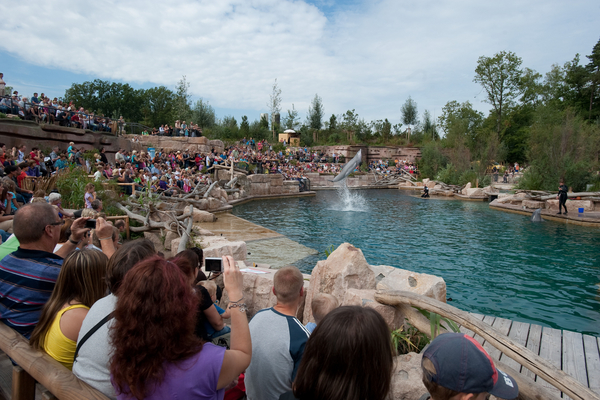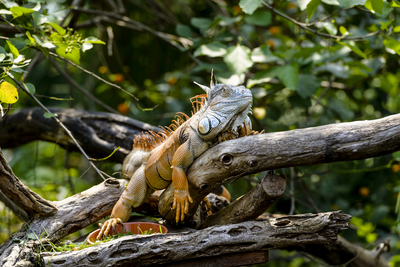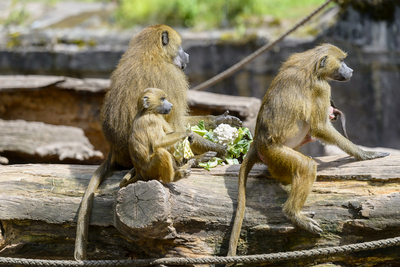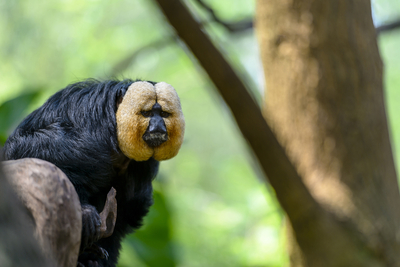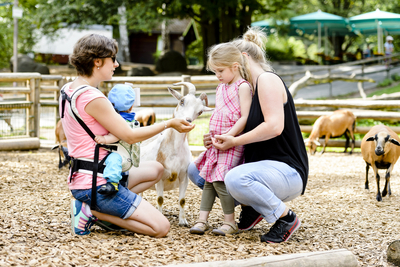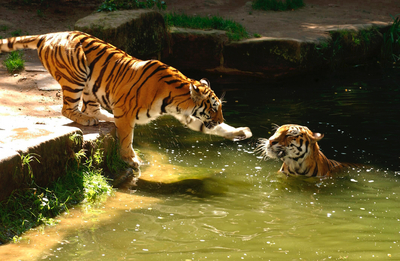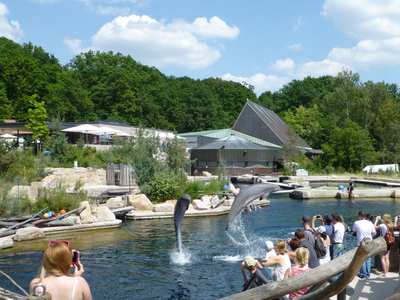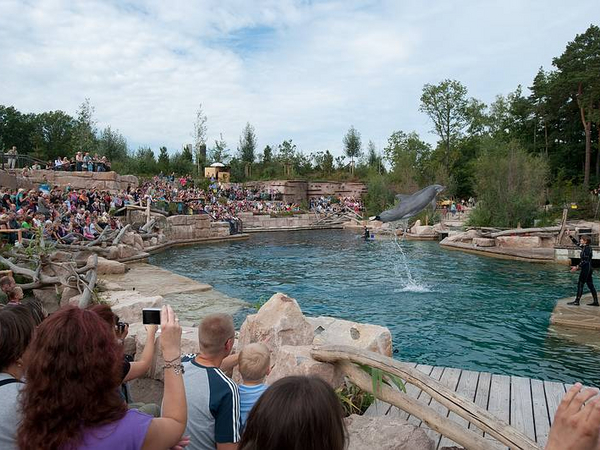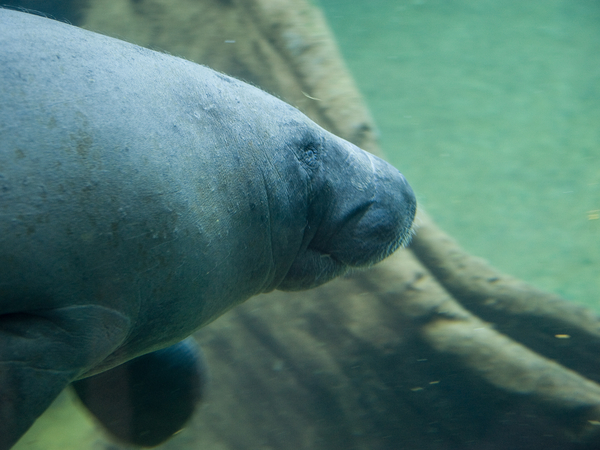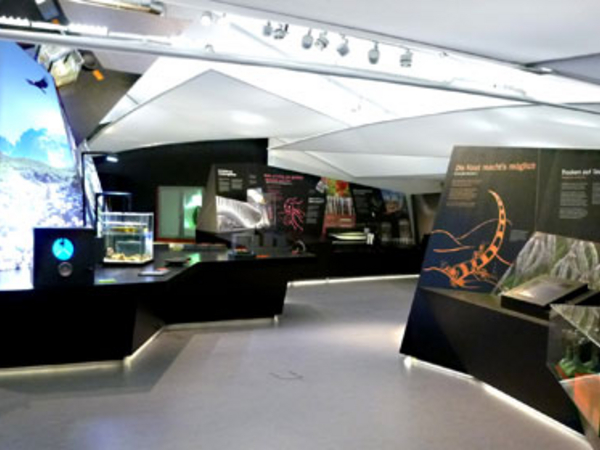Whoever has experienced the wide variety and idylls of Nuremberg Zoo will come back again. The elegant movements of the dolphins and sea lions in the dolphin lagoon, the tropical atmosphere in the manatee house and the feeding of the polar bears in the Aqua Park provide an unforgettable experience. Young visitors have time to stroke and feed the animals in the children's zoo and run around in the huge playground.
Since the 2012 Easter holidays the popular "Kleine Adler" has been running again, a true to scale 1:2 replica of the first ever German steam locomotive. The more than 2 kilometre-long track runs along the giraffe enclosure, below and past the dolphin lagoon to the children's zoo and back again.
Nothing but nature in one of the largest zoos in Europe
A mature stock of trees, idyllic mixed woods and natural landscapes make the Nuremberg zoo one of the most beautiful zoos in Europe. Exotic animals live in harmony right next to a range of local bird species and mammals, and the craggy sandstone rock formations make generous natural enclosures for many animals where they can climb and relax. The new dolphin lagoon with its unique outdoor facilities is a real crowd-puller.
Aqua Park and the Manatee House
Nuremberg Zoo is well known for its sea cows, the manatees. In the Manatee House these gentle giants can be observed under water. The generous dimensions of this tropical house provide a colourful and diverse environment for turtles, butterflies, monkeys and numerous tropical plants. Beavers, penguins, sea lions and polar bears are at home in the Aqua Park, an extensive water landscape interrupted by a variety of small islands.
Species protection in Nuremberg Zoo
Zoos are working together worldwide to preserve the zoological diversity of our earth. Keeping animals as much as possible in their natural habitat and feeding and breeding them is aimed at supporting the natural behaviour of animals and facilitating the resettlement of endangered species. Nuremberg Zoo is involved in the European Endangered Species Preservation Programme (EEP) with over 30 animal species, and coordinates the breeding programme for sea cows, white-naped cranes and Malayan tapirs.
Key facts:
- Over 6800 animals of around 310 different species can be seen at the Nuremberg Zoo.
- The zoo moved from the Dutzendteich to Schmausenbuck to make way for the Nazi Party Rally Grounds
- during World War II, more than 90 % of the facility was damaged
- the dolphin lagoon is the first outdoor lagoon for dolphins and sea lions in Germany
- the Nuremberg Zoo participates in 46 internationalbreeding programs and is a partner zoo of the Species Conservation Foundation
Impressions
The Dolphin Lagoon is a most impressive 5.3 million litre salt water lagoon with a depth of 7 metres and a surface area of 1,100 square metres that has been designed to provide as near a natural habit for its residents. With seating for some 2000 guests this will provide a perfect setting to watch the dolphins and sea lions.
The West Indian Manatee, which belongs to the manatee family (family Trichedhidae, genus "Trichechus"), is not just the namesake of the tropical house in the Nuremberg Zoo, but als its stars.
Non scratch surfaces, energy from plant pigments and "ant intelligence" - in the Bionicum Ideenreich Natur visitor center (Nature Imagination Center), everything focuses on the fascinating world of bionics.


